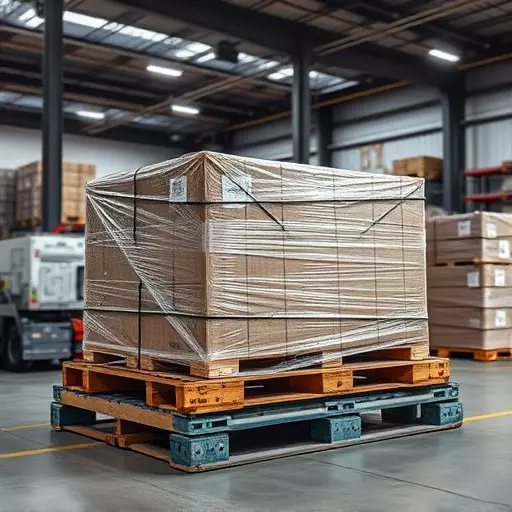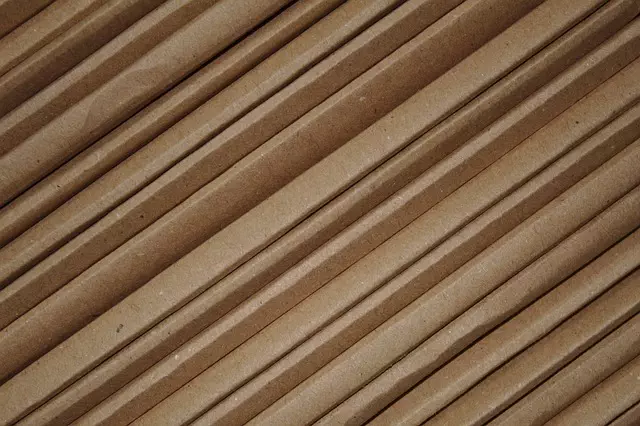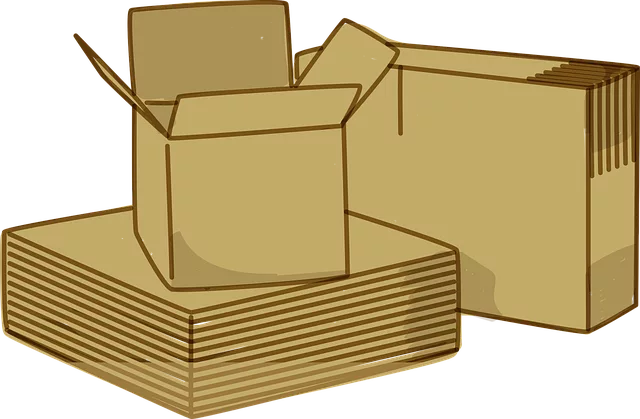In today’s eco-conscious world, minimizing waste is not just a moral imperative but also a strategic business decision. This article explores innovative approaches to wood crate production with minimal waste, focusing on custom and heavy-duty export packaging solutions. We delve into efficient material utilization techniques, creative reuse strategies, and successful case studies like those in Holland, Ohio. Additionally, we examine future trends in eco-friendly export packaging, highlighting the benefits of these practices for both businesses and the environment. Discover how companies are adopting sustainable export packaging solutions in Holland, Ohio, and beyond.
- Understanding Minimal Waste Wood Crate Production
- The Role of Custom Export Packaging in Reducing Waste
- Benefits of Heavy-Duty Export Packaging for Sustainable Practices
- Efficient Material Utilization Techniques
- Creative Reuse and Recycle Strategies for Wood Crates
- Case Studies: Successful Implementation in Holland, Ohio
- Future Trends in Eco-Friendly Export Packaging Solutions
Understanding Minimal Waste Wood Crate Production

In the realm of export packaging solutions, Holland, Ohio stands as a hub for innovative and sustainable practices, particularly in heavy-duty wood crate production. Understanding minimal waste wood crate production is not just about adopting eco-friendly measures; it’s a strategic approach to enhance efficiency and reduce environmental impact without compromising on product protection during global shipping. Custom export packaging plays a pivotal role here, allowing businesses to tailor solutions that suit specific product dimensions and handling requirements.
This tailored approach ensures that no material goes to waste needlessly. Every component, from crate frames to reinforcing dowels, can be designed and utilized with precision, minimizing scrap wood. Advanced woodworking techniques and digital design tools enable manufacturers in Holland, Ohio, to optimize their production processes, resulting in robust, reusable, and environmentally friendly heavy-duty export packaging solutions.
The Role of Custom Export Packaging in Reducing Waste

Custom export packaging plays a pivotal role in minimizing waste during wood crate production. By designing and manufacturing specialized containers tailored to specific product requirements, companies can significantly reduce the need for excessive, one-size-fits-all packaging. In the case of heavy-duty export packaging solutions in Holland, Ohio, local businesses are embracing this approach to create durable, efficient crates that protect goods during international transportation while eliminating unnecessary material waste.
This personalized approach goes beyond simply creating sturdy crates; it involves utilizing innovative materials and smart design elements. Custom export packaging experts consider factors like product weight, dimensions, and handling requirements to engineer solutions that optimize space, reduce the amount of raw materials used, and minimize damage to goods. This not only benefits the environment by decreasing waste but also offers cost savings for businesses while ensuring their products arrive safely at their global destinations.
Benefits of Heavy-Duty Export Packaging for Sustainable Practices

The adoption of heavy-duty export packaging offers a multitude of benefits for sustainable practices in wood crate production. Beyond its initial purpose of protecting goods during transit, this robust packaging type significantly reduces waste generation and environmental impact. Custom export packaging solutions, specifically designed to meet unique product and shipping requirements, play a pivotal role in this process. By utilizing durable materials and meticulous design, these tailored crates extend product lifespans, enabling multiple uses before eventual recycling or repurposing.
Companies like those in the Holland, Ohio area that embrace heavy-duty export packaging contribute to a circular economy, where waste is minimized and resources are conserved. This shift from conventional to sustainable packaging not only aligns with growing consumer demands for eco-friendly products but also fosters positive industry changes. It encourages innovation in material science and design, paving the way for more advanced and environmentally responsible export packaging solutions.
Efficient Material Utilization Techniques

In the realm of wood crate production, efficient material utilization techniques are a game-changer, especially for businesses offering custom export packaging solutions in Holland, Ohio. The key lies in maximizing every piece of wood, minimizing waste, and ensuring the durability required for heavy-duty export packaging. Skilled manufacturers employ innovative methods to cut, shape, and assemble crates, making use of even the smallest scraps. This not only reduces material costs but also contributes to a greener environment by minimizing lumber wastage.
For instance, precision cutting technologies allow for precise measurements, reducing offcuts. Customization techniques, such as modular design and reconfigurable crates, extend crate lifespans and reduce the need for frequent replacements. These strategies are vital in meeting the demand for robust export packaging while promoting sustainable practices, making them a top priority for companies offering custom solutions in the industry.
Creative Reuse and Recycle Strategies for Wood Crates

In the realm of export packaging solutions, Holland, Ohio stands as a beacon for innovative practices. Beyond providing heavy-duty export packaging, businesses here are embracing creative reuse and recycle strategies for wood crates. This approach not only reduces environmental impact but also aligns with growing consumer demands for sustainable products. By designing crates that can be repurposed or recycled, manufacturers contribute to a circular economy, minimizing waste and maximizing resource efficiency.
Custom export packaging plays a pivotal role in this transformation. Crafting crates from reclaimed or sustainably sourced wood, along with implementing modular designs, allows for easier disassembly and recycling. Moreover, these custom solutions can be tailored to specific product needs, ensuring that packaging is both robust enough for international transport and versatile enough for post-use applications. Such strategies not only benefit the environment but also enhance a company’s reputation among consumers who increasingly prioritize eco-friendly practices.
Case Studies: Successful Implementation in Holland, Ohio

Future Trends in Eco-Friendly Export Packaging Solutions

The future of export packaging is poised for a green revolution as businesses and manufacturers increasingly seek sustainable alternatives to traditional methods. Eco-friendly materials and innovative designs are at the forefront of this trend, with a growing focus on minimizing waste and reducing environmental impact. In Holland, Ohio, and beyond, companies are embracing custom export packaging solutions that not only meet regulatory standards but also prioritize ecological considerations.
Heavy-duty export packaging, once known for its reliance on non-biodegradable materials, is evolving to incorporate recycled, recyclable, and compostable options. This shift towards more sustainable practices is driven by consumer demand and government regulations that encourage responsible waste management. Customized solutions allow businesses to protect their products while adhering to specific requirements, ensuring the safe arrival of goods worldwide without compromising environmental integrity.


